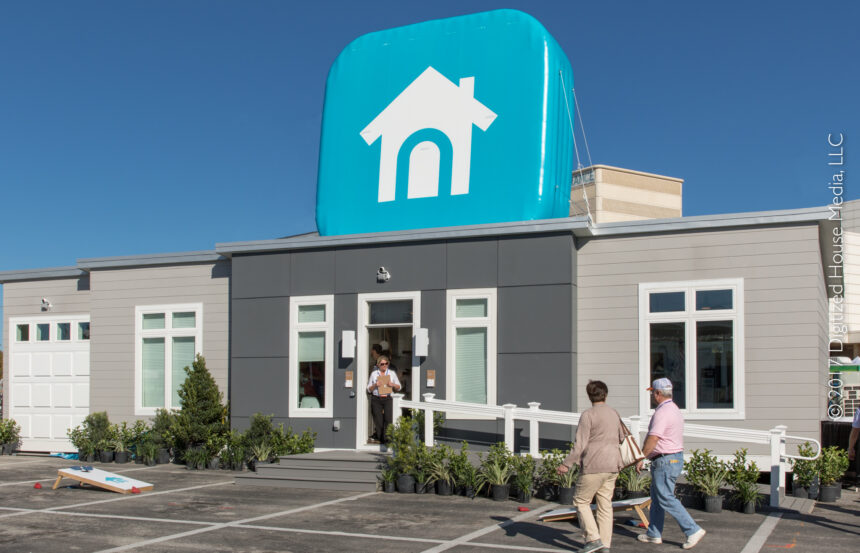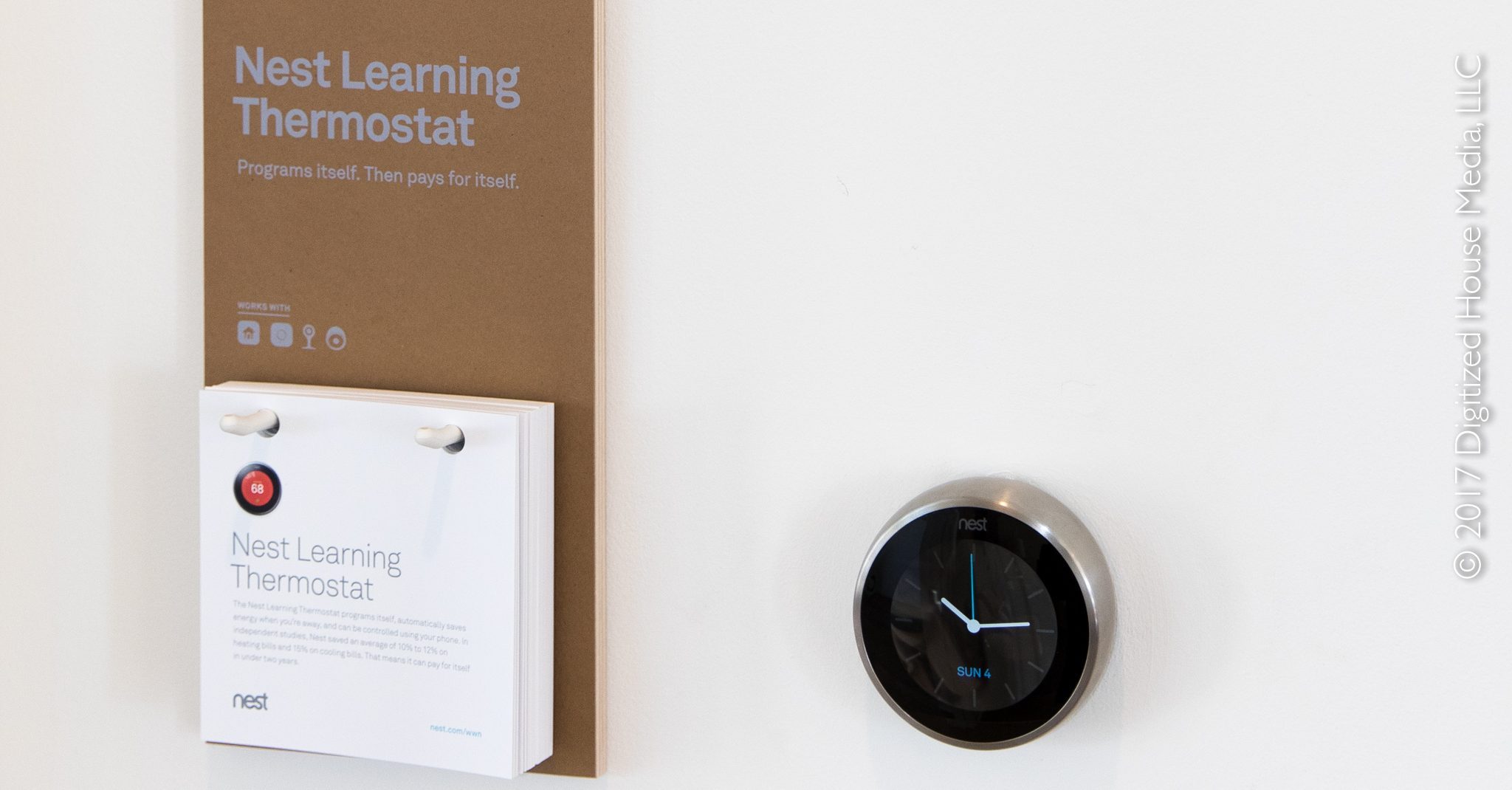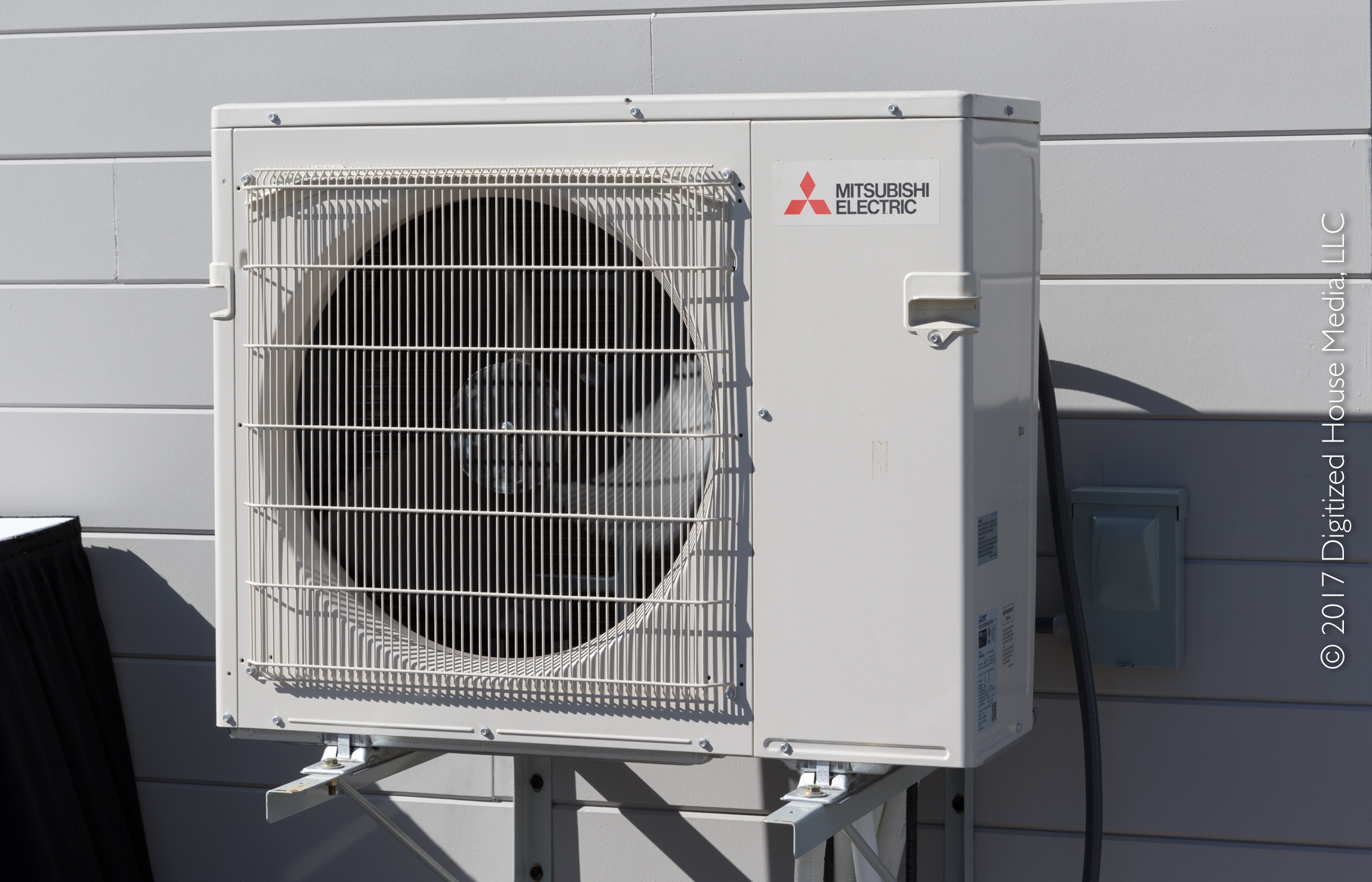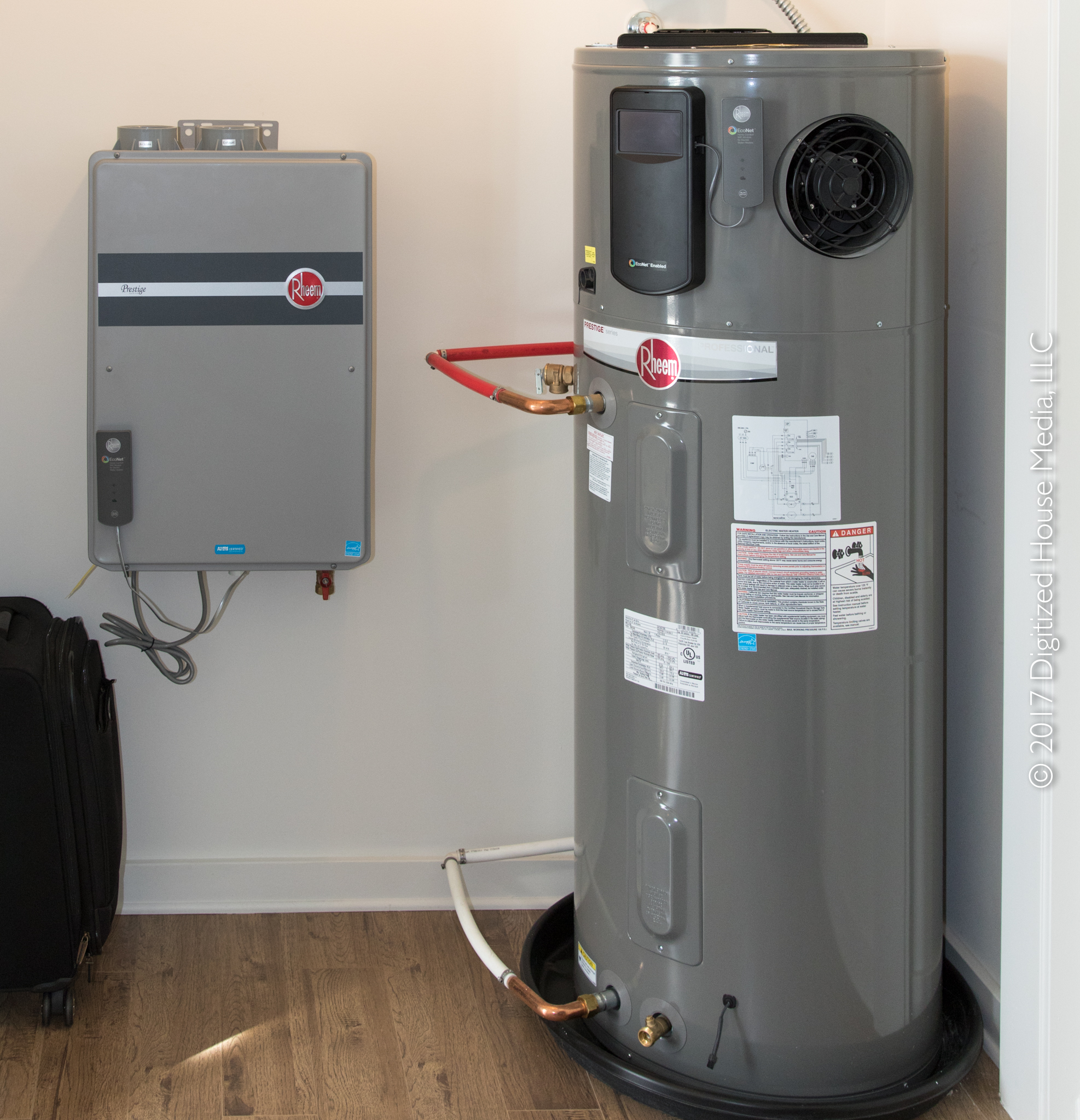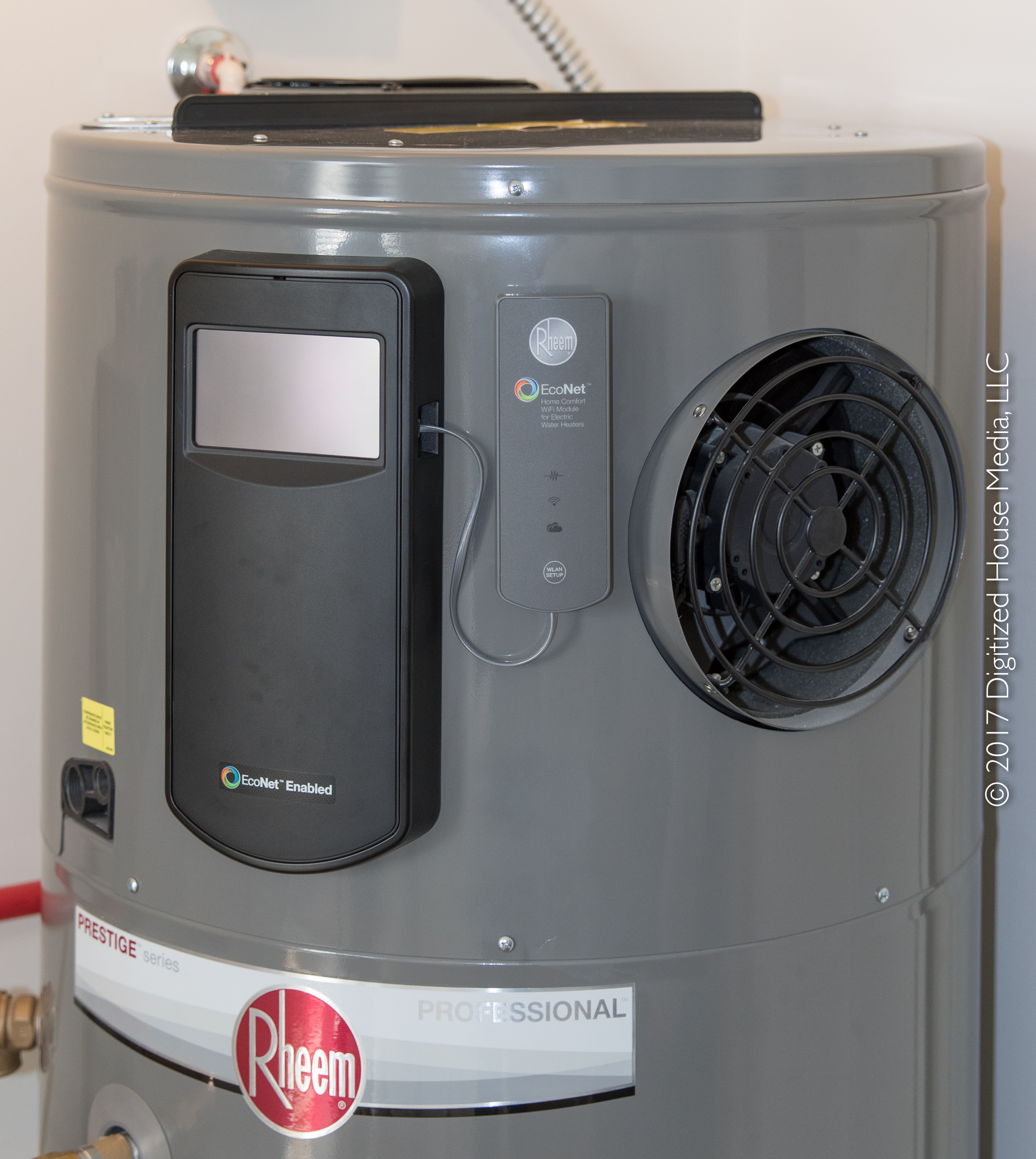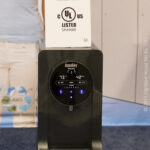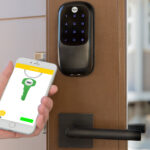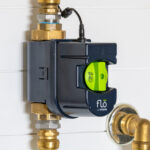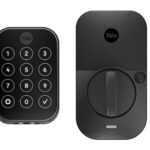How would a small, modern dwelling look and serve its occupants if it were outfitted with connected home products and technologies in every room, and on every wall, inside and out? That question was answered by the Nest Connected Home, a 784-square-foot smart home built specifically for the 2017 NAHB International Builders’ Show (IBS) in Orlando, Florida, where over 20 different products were installed to demonstrate the depth and breadth of what is possible by using Nest products and those of other companies with products that integrate under the Works with Nest program.
Related stories: Inside the Nest Connected Home at IBS 2017: Part 2 and Inside the Nest Connected Home at IBS 2017: Part 3
Nest Learning Thermostat as it was installed in the Nest Connected Home.
Designed and built by modular home company Nationwide Homes, the compact, 1-bedroom, 1-bath structure tips its hat to the the tiny home movement and was constructed in the Professional Builder Magazine Show Village―where it was hard to miss, as the home was topped by a large blue inflatable Nest logo. And on the day we visited and photographed the home, it was filled with show attendees mulling about, many conversing with an attentive Nest staff.
The forthcoming Yale Linus smart lock secured the Nest Connected Home’s doors, and will be the first lock to be integrated into the ubiquitous Nest app.
As one would expect, Nest products were evident throughout, including the Nest Learning Thermostat, Nest Protect smoke and carbon monoxide (CO) alarm, and the Nest Cam Indoor and Nest Cam Outdoor security cameras―as well as products from Nest’s Alphabet family sibling, Google, in the form of the Google Home voice-activated speaker and Google Wi-Fi system. Here, in the first segment of a two-part series. we explore some of the products we spotted, many of them designed to help save energy, promote security, add convenience, or heighten sustainability. Keep in mind that while many of these third-party products offer automations through the Works with Nest program, most of them will also have their own individual dedicated apps or websites to control deeper functions and features.
Exterior features.
Though not part of the Works with Nest program, the home was tastefully clad in James Hardie fiber cement siding, using new architectural products that were highlighted at the show. The entry to the home was framed with the Reveal Panel System painted in dark grey, while the remainder of the home was covered with Artisan V-Rustic siding in a light grey. There was a clean aesthetic appeal gained by using these two products together, and as they are formed from a cementitious material they should hold their paint finishes extremely well when used in the field.
James Hardie’s new fiber cement products, including the Reveal Panel System and Artisan V-Rustic siding, enveloped the exterior of the Nest Connected Home.
Keeping watch over the front door as well as the faux garage door were a pair of Nest Cam Outdoor security cameras. These weatherproof cameras offer a broad range of security features, including Person Alerts and the immersive Sightline interface―all accessible through the Nest app. You can read much about the Nest Cam Outdoor in our in-depth review.
The Nest Cam Outdoor and August Doorbell Cam greeted visitors to the Nest Connected Home.
The front door as well as a side entry off the garage were secured with the Yale Linus smart lock, a product slated for release later in 2017 which will be the first smart lock integrated with the native Nest app. The lock enables access through waving a smartphone or by tapping a passcode on the LED display, and works with Nest Home/Away Assist feature. We are currently working with the similar Yale Assure smart lock in our labs, which we have found to be an extremely easy to install product that works smoothly.
Also guarding the front door was the August Doorbell Cam, which in addition to a conventional chime function also enables homeowners to view and speak with visitors from anywhere through the August app.
Mechanical features.
A Mitsubishi Electric ductless HVAC system handled climate control duties.
A Mitsubishi Electric ductless heating a cooling system was also installed, with a compact external compressor unit visible on the right side of the house. The system was controlled with the third generation version of the popular Nest Learning Thermostat. As a ductless system, these all-electric HVAC systems do not require complex flex or metal ductwork to be built into the structure of the home.
Water heating duties were handled by Rheem tankless and upright hybrid electric systems.
Water heating was handled by a pair of Rheem products, which were placed in a mechanical closet off the bedroom―including the Rheem Professional Prestige Series Hybrid Electric Water Heater and the Rheem Professional Prestige Series Indoor Tankless Water Heater. Both products were equipped with the add-on Rheem EcoNet system, which integrates with the Nest Home/Away Assist functions to automatically set the water heater into an energy-efficient mode when the homeowner is away or when the Nest Rush Hour Rewards feature kicks in. EcoNet can also notify homeowners when a leak is detected in the water heater drain pan, and work to take action based on alerts generated from the Nest Protect smoke and CO detector.
The Rheem WiFi-enabled EcoNet system integrates the water heaters with Nest through the Works with Nest program.
Check back soon for Part 2 of this series, where we will delve into the interior features of this ever-so-smart home.

